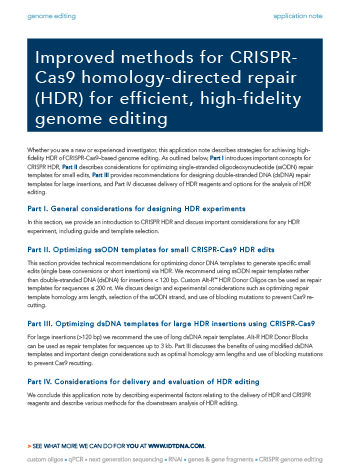Starting with a summary of the key concepts involved in CRISPR-Cas9–mediated HDR, this application note explores the optimization of HDR in mammalian cell lines. We discuss criteria for selecting guide RNA sequences, highlight considerations for rational design of synthetic DNA donor templates, and detail how efficient HDR can be achieved by optimizing each step of the experimental procedure. We also examine technical considerations for using Cas9 nickases to generate staggered double-strand breaks (DBSs) for your HDR experiments.
